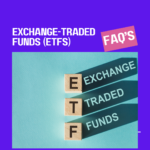Who typically invests in Infrastructure Funds?
Infrastructure funds attract a wide range of investors due to their long-term, stable returns and government backing.
1. Institutional Investors
- Pension Funds & Insurance Companies – Seek stable, long-term returns to match their liabilities.
- Sovereign Wealth Funds (SWFs) – Invest in infrastructure for diversification and economic growth.
- Endowments & Foundations – Prefer low-risk, income-generating investments.
2. Private Equity & Asset Managers
- Private Equity Funds – Invest in large-scale infrastructure projects with potential for high returns.
- Investment Banks & Fund Managers – Facilitate infrastructure deals and financing.
3. Government & Public Sector Entities
- State-Owned Enterprises (SOEs) – Participate in strategic infrastructure projects.
- Development Banks & Multilateral Institutions – Provide funding and expertise for global infrastructure development.
4. Retail & High-Net-Worth Individuals (HNWIs)
- Mutual Funds & ETFs – Allow retail investors exposure to infrastructure assets.
- Infrastructure Investment Trusts (InvITs) – Provide individuals and HNWIs with a stable income from infrastructure projects.
What are Real Estate Investment Trusts (REITs)?
A Real Estate Investment Trust (REIT) is an investment vehicle that owns, operates, or finances income-generating real estate assets. REITs allow investors to participate in real estate investments without directly owning properties.
Key Features of REITs
- Income Generation: Earns revenue from rent, lease, or property sales.
- Liquidity: Traded on stock exchanges like shares, offering easy entry and exit.
- Diversification: Invests in commercial, residential, industrial, or retail properties.
- Regulated Structure: In India, SEBI regulates REITs, ensuring transparency.
- Mandatory Distribution: Must distribute at least 90% of net distributable income to unit holders.
Types of REITs
- Equity REITs: Own and manage income-generating real estate.
- Mortgage REITs (mREITs): Provide financing for real estate by investing in mortgages and mortgage-backed securities.
- Hybrid REITs: Combine both equity and mortgage REIT strategies.
How does a company qualify as a REIT?
To be recognized as a Real Estate Investment Trust (REIT), a company must meet specific regulatory criteria set by authorities like SEBI (India), SEC (USA), or other governing bodies.
Key Qualification Criteria for REITs
1. Asset & Income Requirements
- At least 80% of total assets must be invested in income-generating real estate (India).
- At least 75% of total income must come from rent, leasing, or property sales (USA).
2. Ownership & Structure
- Must be publicly listed on a stock exchange.
- Must have at least 100 unit holders (for tax benefits in the USA).
- In India, sponsors must hold at least 15% for the first 3 years after listing.
3. Dividend Distribution
- At least 90% of net distributable cash flow must be paid as dividends to unit holders.
- Ensures investors receive consistent returns.
4. Leverage & Debt Limits
- In India, total borrowings cannot exceed 49% of asset value without unit holder approval.
5. Operational Requirements
- Must own and operate real estate assets for long-term income generation.
- At least 51% of revenue must come from rent, leasing, or property management.
What are the advantages & disadvantages of REITs?
| Aspect | Advantages | Disadvantages |
|---|---|---|
| Income & Dividends | Regular income as REITs distribute 90% of earnings. | Dividends are taxable in the hands of investors. |
| Liquidity | Can be bought/sold on stock exchanges like shares. | Prices can be volatile due to market fluctuations. |
| Diversification | Exposure to multiple real estate sectors without direct ownership. | Investors have no control over property selection. |
| Professional Management | Managed by experienced real estate professionals. | Management fees reduce overall returns. |
| Tax Benefits | REITs often have corporate tax exemptions. | Investors pay tax on dividend income. |
| Low Investment Requirement | Requires less capital than direct property investment. | Investors don’t own physical assets. |
| Interest Rate Sensitivity | REITs provide stable returns even in low-rate environments. | Prices fall when interest rates rise. |
| Leverage & Debt Risk | REITs use leverage to acquire properties and grow. | High debt levels increase financial risk. |
What are Infrastructure Investment Trusts (InvITs)?
An Infrastructure Investment Trust (InvIT) is an investment vehicle that allows investors to participate in income-generating infrastructure assets such as roads, highways, power transmission, renewable energy, and telecom towers. Regulated by SEBI in India, InvITs function similarly to REITs but focus on infrastructure projects instead of real estate.
Key Features of InvITs
- Stable Income: Must distribute at least 90% of net distributable cash flow to unit holders.
- Diversified Infrastructure Exposure: Includes transport, energy, water, and telecom projects.
- Liquidity: Listed InvITs are traded on stock exchanges, providing easy entry and exit.
- Tax Efficiency: Certain tax benefits for investors and exempt from dividend distribution tax.
- Long-Term Investment: Focuses on operational infrastructure assets with steady cash flows.
Types of InvITs
- Public InvITs: Listed on stock exchanges, available to retail and institutional investors.
- Private InvITs: Unlisted, meant for institutional and high-net-worth investors (HNIs).
Major InvITs in India
- IRB InvIT Fund (Road Infrastructure)
- India Grid Trust (IndiGrid) (Power Transmission)
- PowerGrid InvIT (Government-backed Power Transmission)
How are InvITs structured in India?
InvITs in India follow a trust-based structure, regulated by SEBI (Securities and Exchange Board of India). The structure consists of multiple entities that manage assets, investments, and operations.
Key Entities in an InvIT Structure
| Entity | Role & Responsibilities |
|---|---|
| Sponsor | - Promoter of the InvIT. - Sets up the InvIT and holds at least 15% of total units for at least 3 years. |
| Trustee | - Ensures compliance with SEBI regulations. - Appointed by the sponsor and acts in the interest of unit holders. |
| Investment Manager | - Manages the InvIT’s assets and investments. - Makes operational and strategic decisions. |
| Project SPVs (Special Purpose Vehicles) | - Own and operate the underlying infrastructure assets. - SPVs may have direct contracts with government or private entities. |
| Unit Holders (Investors) | - Individuals, institutions, and HNIs who invest in the InvIT. - Receive periodic income through dividends and interest. |
What are the benefits of InvITs?
| Benefit | Description |
|---|---|
| Stable & Regular Income | InvITs must distribute at least 90% of net distributable cash flow as dividends, interest, or return of capital to investors. |
| Liquidity | Listed InvITs are traded on stock exchanges, allowing investors to buy and sell units easily, unlike direct infrastructure investments. |
| Diversification | Provides exposure to multiple infrastructure assets such as roads, power transmission, renewable energy, and telecom. |
| Professional Management | Managed by experienced investment managers, reducing the burden of asset selection and maintenance. |
| Tax Efficiency | - No dividend distribution tax (DDT) for InvITs. - Investors receive tax-efficient payouts, with certain components (like return of capital) being tax-free. |
| Lower Investment Requirement | Retail investors can invest in listed InvITs with a minimum amount of ₹10,000 – ₹15,000, making infrastructure investment more accessible. |
| Regulated Framework | SEBI-regulated, ensuring transparency, regular disclosures, and investor protection. |
| Potential for Capital Appreciation | If underlying infrastructure assets generate higher revenue, unit prices can appreciate, providing capital gains to investors. |
| Long-Term Growth Potential | Infrastructure projects have stable, long-term revenue streams, ensuring consistent returns. |
How are InvITs and REITs different?
| Aspect | Infrastructure Investment Trusts (InvITs) | Real Estate Investment Trusts (REITs) |
|---|---|---|
| Focus Area | Infrastructure assets (roads, highways, power transmission, telecom, renewable energy). | Real estate properties (commercial offices, retail malls, hotels, warehouses). |
| Revenue Model | Earnings from tolls, power tariffs, leasing of infrastructure assets. | Earnings from rent, lease agreements, and capital appreciation of properties. |
| Minimum Investment | ₹10,000 – ₹15,000 (for retail investors in listed InvITs). | ₹10,000 – ₹15,000 (for retail investors in listed REITs). |
| Dividend Payout | At least 90% of net distributable cash flow must be distributed to investors. | At least 90% of net distributable cash flow must be distributed to investors. |
| Liquidity | Listed InvITs are traded on stock exchanges like shares. | Listed REITs are also traded on stock exchanges like shares. |
| Risk Factor | Higher risk due to exposure to economic cycles, government policies, and infrastructure project delays. | Lower risk as real estate properties typically have long-term leases and stable rental income. |
| Capital Appreciation | Limited, as infrastructure assets depreciate over time. | Higher potential, as real estate assets appreciate in value over time. |
| Tax Efficiency | No dividend distribution tax (DDT). Returns include interest, dividend, and capital repayment (some tax-free components). | No DDT, but dividends are taxed in investors' hands. |
| Examples in India | IRB InvIT, India Grid Trust, PowerGrid InvIT. | Embassy Office Parks REIT, Brookfield India REIT, Mindspace REIT. |
Who should invest in InvITs and REITs?
| Investor Type | Ideal for InvITs | Ideal for REITs |
|---|---|---|
| Retail Investors | ✓ Suitable for investors seeking stable income from infrastructure assets. | ✓ Best for those looking for regular rental income and capital appreciation. |
| Institutional Investors | ✓ Pension funds, insurance companies, and sovereign wealth funds benefit from long-term infrastructure projects. | ✓ Institutions prefer REITs for steady real estate income and portfolio diversification. |
| HNWIs & Ultra HNWIs | ✓ Offers tax-efficient, diversified infrastructure exposure. | ✓ Ideal for those looking to invest in premium commercial real estate with growth potential. |
| Long-Term Investors | ✓ Suitable for investors with low-risk appetite who prefer stable, predictable returns. | ✓ Best for those who want capital appreciation along with rental income. |
| Income-Focused Investors | ✓ Provides steady cash flow from tolls, power tariffs, and infrastructure assets. | ✓ Ensures consistent rental income from office spaces, malls, and warehouses. |
| Risk-Tolerant Investors | ✓ Requires understanding of infrastructure risks like regulatory changes. | ✓ Less volatile than InvITs, making it a safer bet for moderate-risk investors. |
| Diversification Seekers | ✓ Helps diversify investments beyond equities, bonds, and traditional real estate. | ✓ Allows diversification in commercial real estate without direct property ownership. |



